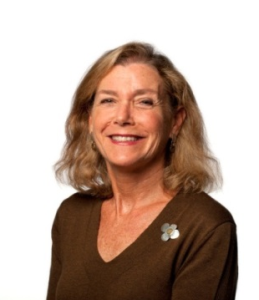AARP Hearing Center
Eldercare Primarily Concerns Older Workers and Their Employers, Right? Think Again
By Lynn Friss Feinberg, May 10, 2016 05:00 AM

For employers big and small, the need to support workers who also provide unpaid care for a family member is a growing reality. Most family caregivers today — or an estimated 23.9 million workers — work at a paying job on top of their caregiving responsibilities.
Yet today, care for a relative with a serious illness or disability takes place in a very different world from that of our grandparents’ generation.
To start, the role of family caregivers has greatly expanded in recent years. Today that role means everything from arranging, coordinating and providing long-term services and supports (LTSS), to navigating the complex health care system, to performing more intensive and complex care in the home — all this while facing competing demands in the workplace.
Research suggests that employed caregivers with eldercare responsibilities have less access to flexible work options to carry out their dual responsibilities than do workers with child-care needs. In addition, they perceive less job security. Employed caregivers have also experienced employment discrimination due to their eldercare responsibilities.
Numbers tell the story.
Let’s look more closely at who is managing paid work and family caregiving roles. According to the Caregiving in the U.S. 2015 survey, 60 percent of family caregivers are employed: 66 percent of the men and 55 percent of the women. Nearly 2 in 3 (63 percent) provide care for an individual age 65 or older. Most (55 percent) of these employed caregivers expect to still have some family caregiving responsibilities in the next five years as well.
Another interesting data point we often don’t consider: Half (51 percent) of employed caregivers are older workers themselves, age 50 and older.
According to the Bureau of Labor Statistics, about 1 in 4 (25 percent) workers will be over age 55 by 2024, up from 12 percent in 1992. The upward trend in labor force participation among this age group is due in large part to a greater proportion of older women (ages 50 to 64) — those most likely to have eldercare responsibilities — remaining in the workforce. For many of these older women, their paid jobs are an increasing source of financial support to their families.
But consider this: Caring for an ill or older relative affects younger as well as older workers.
Here’s a little-known fact: The rate of employment while caregiving is especially high for millennials, ages 18 to 34. Nearly 3 in 4 (73 percent) millennial caregivers report holding a paying job while providing care for an ill or aging family member.
As the U.S. population rapidly ages, the need to support workers with family caregiving responsibilities will grow.
Some employers are leading the way. Recently, AARP announced an important new workplace benefit — a caregiving leave program allowing eligible employees up to two weeks of paid time off per year to care for a seriously ill or disabled family member.
Promoting family leave and paid sick days, arranging flexible work options and protecting workers from discrimination on the basis of their caregiver status are important policies and benefits for working families. Advancing a culture of understanding about eldercare needs is especially important to help make the workplace more supportive of workers who are also family caregivers — many of whom are in their prime working years.
Photo: iStock

Lynn Friss Feinberg, MSW, is a senior strategic policy adviser for the AARP Public Policy Institute. She has conducted policy analysis and applied research on family caregiving and long-term services and supports for more than 30 years.
Also of Interest
- The CARE Act: Helping family caregivers from hospital to home
- Top five money wasters
- Ending hunger could be a SNAP
- Join AARP: savings, resources and news for your well-being
See the AARP home page for deals, savings tips, trivia and more.































































